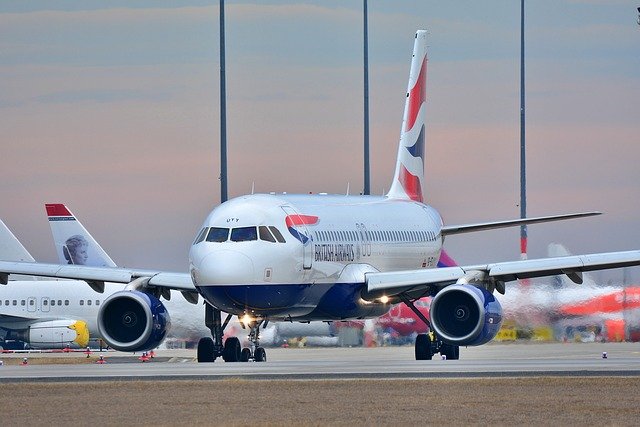Traveling Safely with FAA-Approved Mini Oxygen Concentrators in the United States 2025
FAA-approved portable oxygen concentrators (POCs) allow many people who require supplemental oxygen to fly across the United States. Knowing airline policies and required documentation helps you prepare; this article summarizes essential 2025 guidelines for traveling with mini POCs.

The Importance of FAA Approval for Mini Oxygen Concentrators
The FAA enforces stringent standards for portable oxygen concentrators used on commercial flights within the U.S. Only POCs that comply with these standards and bear an FAA compliance label are authorized for use in aircraft cabins. This certification guarantees that devices function safely in pressurized cabin environments and do not interfere with aircraft systems.
If you rely on a mini oxygen concentrator, it’s essential to verify that your device is FAA-approved before traveling. Generally, such devices feature a compact design, dependable oxygen delivery, and battery power capable of supporting long-duration flights.
Consulting Your Doctor Before Flying
Prior to purchasing your ticket, it is vital to speak with your healthcare provider about your oxygen therapy needs. Your physician can:
- Confirm the appropriate oxygen flow settings for different altitudes and travel-related activities.
- Provide a detailed medical prescription or a physician’s statement verifying your requirement for supplemental oxygen and specific use of your mini oxygen concentrator.
Airlines often require this documentation for boarding approval, and it is also helpful during airport security screenings.
Notifying Airlines and Required Documentation
Typically, U.S. airlines ask passengers to inform them 48 to 72 hours ahead of travel if they plan to bring and use a portable oxygen concentrator onboard. Notification procedures differ by airline, but usually involve submitting medical forms or a physician’s statement.
When preparing your travel paperwork, bring along:
- Your doctor’s prescription or letter of medical necessity.
- The concentrator’s user manual and manufacturer details.
- Warranty and maintenance records if available.
Keeping these documents organized and easily accessible simplifies verification by airline staff and security officers.
Managing Battery Power for Your Flight
FAA regulations require passengers to carry enough battery capacity to run their portable oxygen concentrator for at least 150% of the flight duration. For instance, on a 4-hour flight, batteries must provide a total of 6 hours of operation.
Key points to remember include:
- Carry spare batteries in your carry-on luggage; do not pack them in checked bags.
- Prevent short circuits by storing batteries in their original packaging or insulating exposed terminals with tape.
- Fully charge batteries before boarding.
- Avoid relying on airplane power outlets to operate or recharge your device, as they may not provide sufficient power.
Device Handling and Seating Considerations During Flight
FAA guidelines require that your mini oxygen concentrator remains with you throughout the flight. The device should be:
- Stowed under the seat in front of you to keep aisles clear.
- Managed carefully to prevent tubing tangles and minimize tripping risks.
- Positioned so that filters and air intakes are unobstructed to avoid overheating.
Additionally, passengers using POCs are not permitted to occupy exit row seats for safety reasons. Some airlines assign window or aisle seats that facilitate easier device management; be sure to confirm your seating when notifying the airline.
Types of Portable Oxygen Concentrators and Travel Suitability
Portable oxygen concentrators generally come in two types:
- Pulse Dose Concentrators: Deliver oxygen only during inhalation, are lighter, and usually offer longer battery life (generally 2 to 10 hours depending on settings). Ideal for active travelers.
- Continuous Flow Concentrators: Provide a steady oxygen flow regardless of breathing patterns, often used by patients who need consistent oxygen levels, including while sleeping. These are typically heavier with shorter battery endurance.
Choose the concentrator type that aligns best with your oxygen needs and travel plans.
Preparing for Cabin Pressure and Emergencies
Commercial aircraft cabins are pressurized to simulate altitudes of about 6,000 to 8,000 feet, which can lower oxygen saturation, particularly for passengers with respiratory conditions. Given the reduced efficiency of oxygen delivery under these conditions, you should:
- Know how to properly use the oxygen masks provided by the airline in emergencies.
- Inform flight attendants about your medical condition and oxygen equipment.
- Keep your device’s manual handy for reference.
- Have a backup oxygen therapy plan ready if necessary.
Additional Tips for Traveling with Mini Oxygen Concentrators
To improve your travel experience further, consider these helpful tips:
- Pack extra nasal cannulas, tubing, and accessories in your carry-on.
- Use wheeled cases to make airport transit easier.
- If traveling internationally, research oxygen suppliers and customs regulations ahead of time.
- Carry laminated cards detailing your medical condition and equipment in multiple languages, which is especially useful for non-English-speaking destinations.
Conclusion
Traveling in the U.S. with an FAA-approved mini oxygen concentrator calls for careful planning, including medical consultation, airline notification, and proper device handling. Following FAA and airline guidelines on documentation, battery capacity, seating, and device use will contribute to safer and more comfortable flights. With appropriate preparation, oxygen therapy users can confidently enjoy the freedom of air travel while maintaining their health.
Disclaimer: This article is for educational purposes only and does not substitute professional medical advice. Prices, availability, and airline policies may differ by region and change over time. Always confirm current regulations with your airline and consult your healthcare provider before flying.
Sources
-
Transportation Security Administration (TSA) – Portable Oxygen Concentrators https://www.tsa.gov/travel/security-screening/whatcanibring/items/portable-oxygen-concentrators
-
Guide to Flying with an Oxygen Concentrator – Oxygen Concentrator Store https://www.oxygenconcentratorstore.com/blog/guide-to-flying-with-an-oxygen-concentrator/




